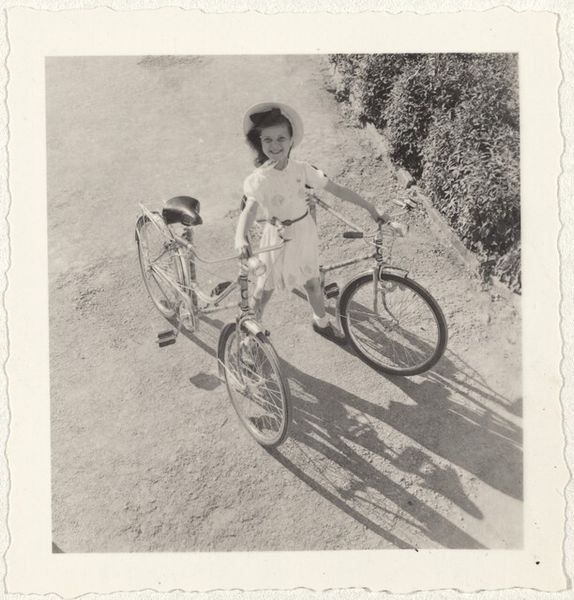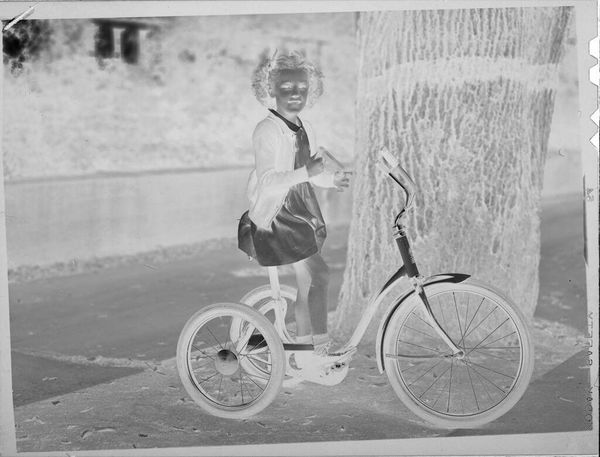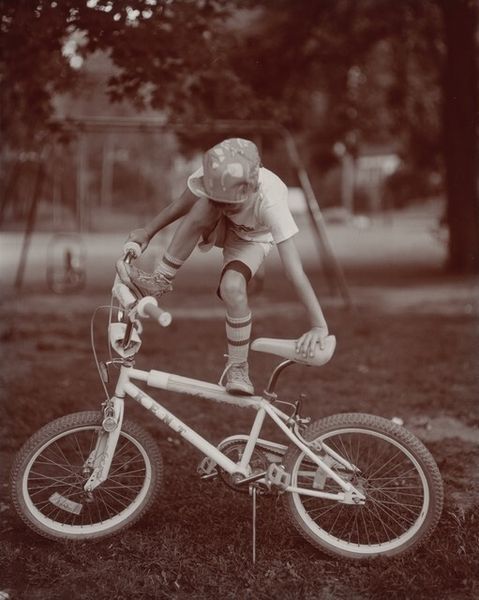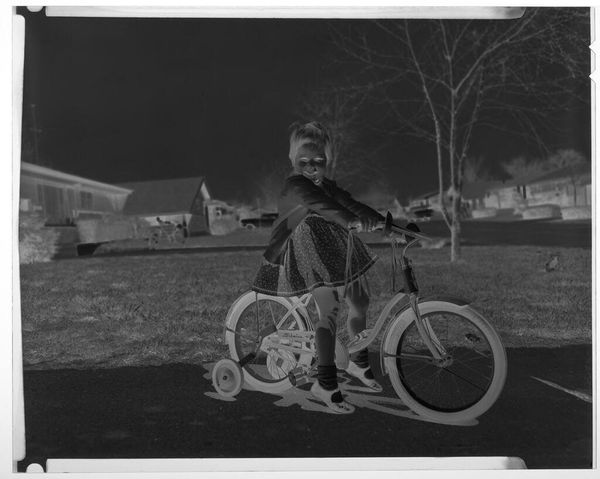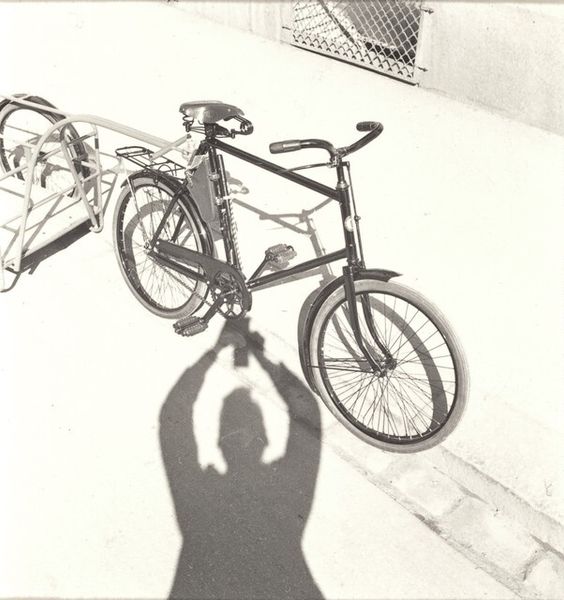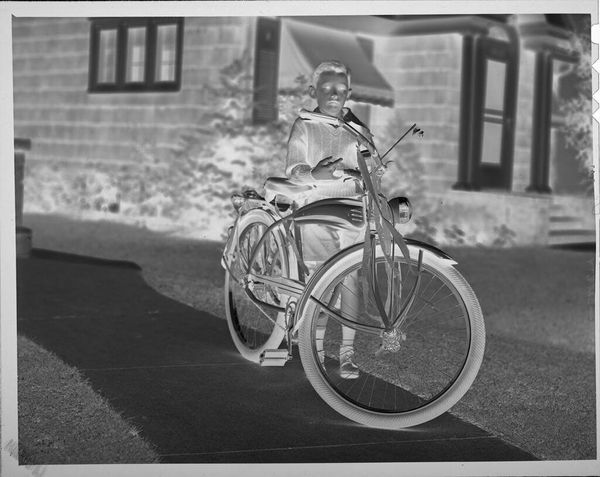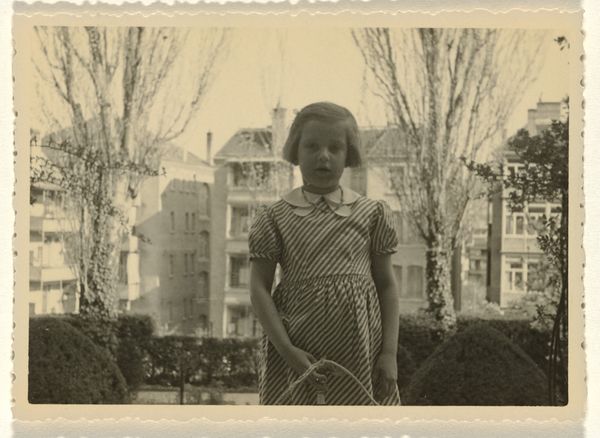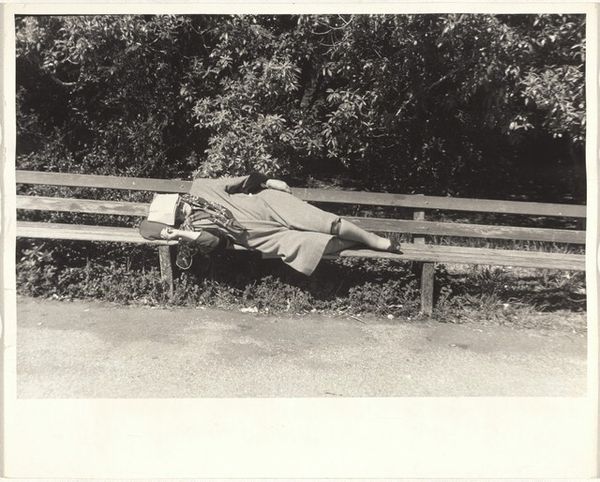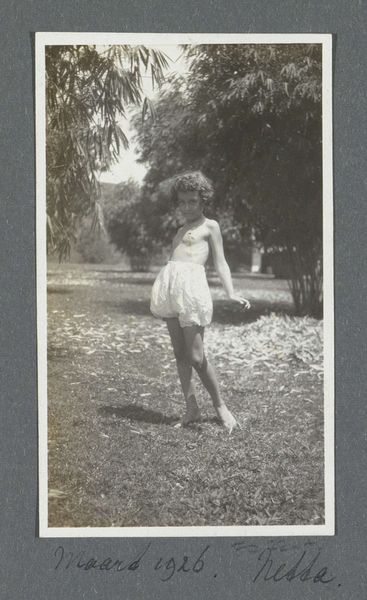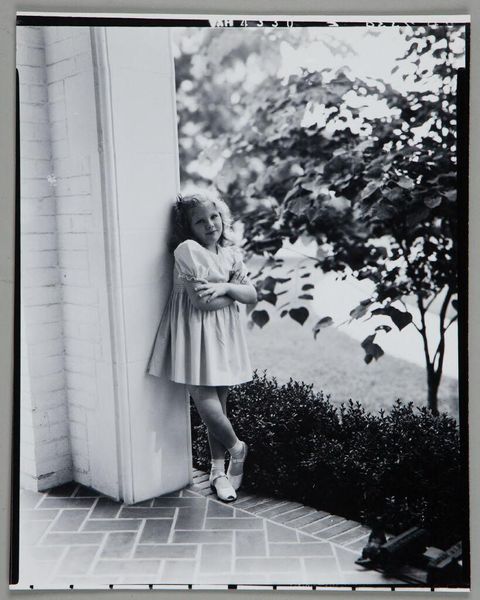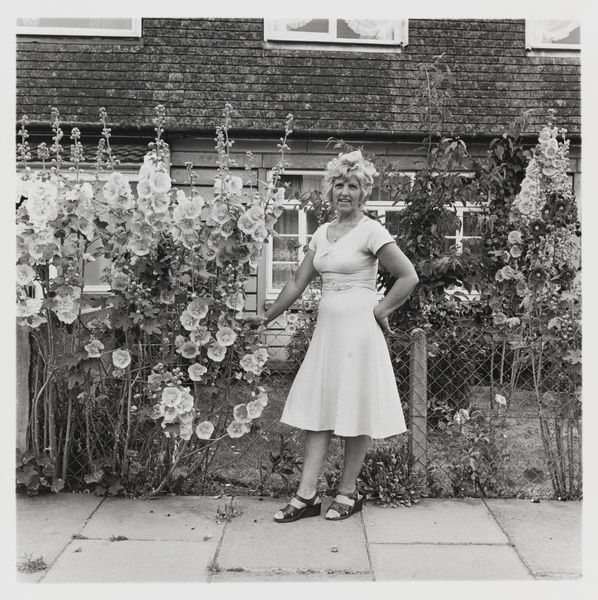
print, photography, gelatin-silver-print
#
portrait
# print
#
street-photography
#
photography
#
gelatin-silver-print
#
realism
Dimensions: image: 5.6 x 5.4 cm (2 3/16 x 2 1/8 in.) sheet: 6.5 x 6.3 cm (2 9/16 x 2 1/2 in.)
Copyright: National Gallery of Art: CC0 1.0
Editor: Robert Frank's 1945 gelatin silver print, "Girl riding bicycle, Basel--Children," really struck me. The light seems so hopeful and the composition very balanced. What elements do you find most compelling about its visual construction? Curator: I'm immediately drawn to the geometric relationships within the frame. Notice how the circular form of the bicycle wheel is echoed in the curve of her hat, creating a visual consonance. Furthermore, consider how the linear elements, such as the handlebars and the implied lines of the road, guide the viewer’s eye towards the figure. Editor: That's fascinating. I hadn’t thought about the echo between the wheel and the hat. It also looks as though the deep blacks in the upper-left foliage, counterbalanced by the lighter tones of the girl and the road on the bottom-right, create a beautiful tension within the photographic plane, no? Curator: Precisely. That contrast is significant, operating almost like a semiotic signifier – light versus dark. What does that evoke for you? Think beyond the representational and consider it in terms of pure visual language. Editor: Well, it does create a sense of movement, leading the eye from dark to light, and emphasizing the direction she is travelling. And it's all quite spontaneous, I am intrigued by Frank's decision to frame the shot just as he did. Curator: Indeed. Note the way the edge of the frame interacts with the figure – her arm reaching towards the top, creating a dynamic relationship between subject and boundary. That contributes to the overall visual energy. How do you feel all of those qualities contribute to our understanding of the subject? Editor: By examining its purely formal aspects, it appears that the photograph's subject projects more emotion. Frank has created a sense of spontaneous and optimistic energy by emphasizing the interaction between shapes and lines in the piece, I really understand more by concentrating on the visual components. Thanks! Curator: Agreed. These compositional aspects are powerful tools that we use to decode artworks from just surface content to a real structural understanding.
Comments
No comments
Be the first to comment and join the conversation on the ultimate creative platform.
